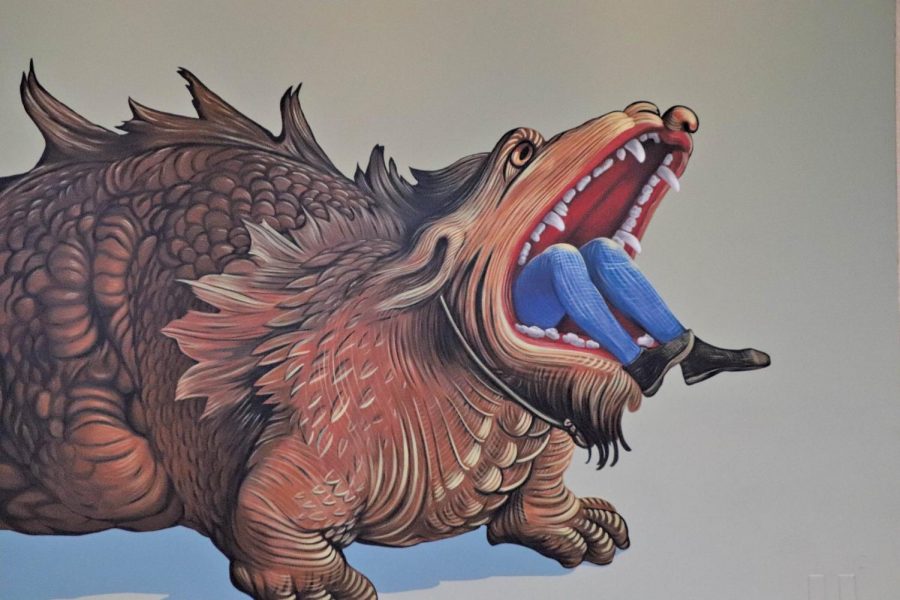Medieval monsters invade the Blanton, breathe fire into literature of past
Pictured is one of the many monsters depicted in new exhibit at The Blanton Museum of Art. To find out more about the ‘Medieval Monsters” and other exhibits, visit blantonmuseum.org.
Once upon a time, a long time ago, people used to live in fear of monsters and creatures such as dragons and giants, creatures we only hear about in fairytales. You can now visit this time and explore the new “Medieval Monsters” exhibit currently at the Blanton Museum.
Now through Jan. 12, people will be able to check out over 50 illuminated manuscripts that display all kinds of medieval monsters from the European Middle Ages and Renaissance period.
The manuscripts are split up into three different categories that examine how people viewed monsters at that time: Terrors, Aliens, and Wonders. The exhibit reflects how people used these monsters as a symbol of power, inspiration or a way of representing parts of society.
“People don’t realize how important this exhibit is. It is a glance into a whole other time period where they used their creativity to make these monsters a part of their lives. It gave the people a power and a knowledge that they didn’t have before,” said one of the exhibit’s security guards.
In the Terrors category, the exhibit explains how the medieval art and creatures were created by the nobility and clergy at the time as a way to ignite fear in the people and reestablish their own authority as leaders.
The Aliens category clarifies what the people of medieval Europe would define as “aliens.” Europeans at the time considered anything outside of Europe to be “exotic” or “alien-like.” This category was set aside for groups in society that were away from Europe.
Monsters were put in the Wonders category because people of the time had a difficult time deciding whether they were real or fiction due to the difficult nature of explaining them. To them, such monsters were not one fixed thing and were able to surpass what others had thought possible for monsters before them. They inspired people to consider their place in the world, shifting perceptions and expectations.
Most of the monsters included in the exhibit are monsters that are common in storybooks, yet carefully studied as if dragons fly around all day and griffins wander about. It is an interesting way of looking at how people during medieval times valued these monsters and how they affected their everyday life — yet, we only know about them from fairy tales that we read as kids or watch in movies.
“I never really thought about these monsters as anything but just fairytale creatures,” exhibit visitor Lilly Dazet said. “It’s crazy how they used to mean so much to people that actually spent time studying them and learning about them.”
“Medieval Monsters” takes the monsters everyone knows and turns them into something more real while considering their practicality besides guarding princesses in towers and living on top of giant beanstalks.







